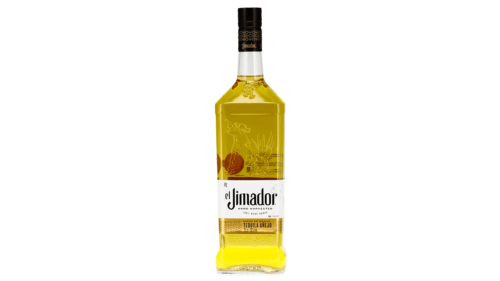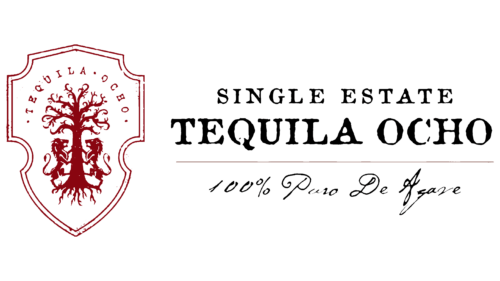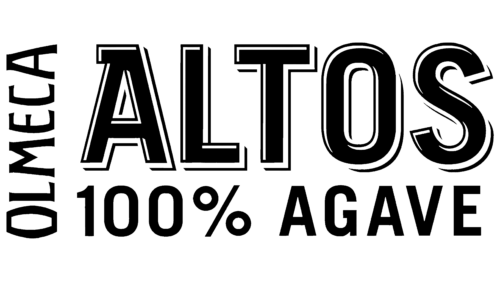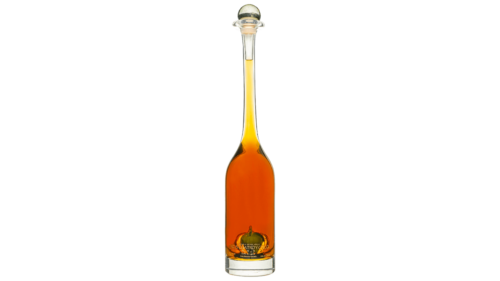“Refreshing, sweet, fruity” is how the taste of real tequila is described. It is considered a native Mexican drink. However, the alcohol produced by the natives resembled little of the modern brand. Both in flavor and strength, it was similar to beer.
The first real Mexican vodka was produced by the Spaniards who conquered the lands of Yucatan in the 16th century. They obtained more than 50% alcohol, similar to their favorite rum, which was part of the sailors’ diet due to its good preservation during long voyages.
The product of Spanish distillation was called mezcal by the local Aztecs. For almost 100 years, it was hidden from public view and was only distributed in certain parts of the country. In 1600, tequila began to conquer the world. Today, its lovers live in Asia, Africa, Australia, Canada, and Europe. But the biggest connoisseurs are Americans (87% of exports are to the USA).
Up to 1000 brands of tequila are known. We will tell you how they differ, how to identify the original drink, and describe the best brands.
Identifying Authentic Tequila
Genuine tequila is produced only in Mexico. However, not every alcohol, even of Mexican origin, can be called so. The drink must meet several criteria:
- Be made from agave of the Weber Azul variety.
- Be prepared from raw materials in a limited area with special soils – five states in the southwest of the country, the central one being Jalisco.
- To pass the NOM certification, which regulates the chemical and physical characteristics of the beverage.
Interestingly, long before the 1974 decree (fixing the name of the drink, method, and place of its production), the quality of the first Mexican vodka was determined by the presence of a worm in the bottle. Producers collected caterpillars of the agave parasite and placed one in each container during bottling. In strong alcohol, the insect was preserved, while in poor-quality drinks, it dissolved. Modern mezcal differs slightly from the current original tequila in fermentation technology.
Tequila Production
The production of elite tequila is almost always manual labor. Succulent agave with green-blue fleshy leaves resembling aloe is grown on large plantations under the scorching sun for at least 5-8 years. Only when the plant grows a large enough central stem, or piña, is it manually cut and stripped of its leaves. This is not an easy process, as the weight of a single agave can reach 100 kilograms.
The resulting cone, which resembles a giant pineapple, is roasted in large ovens for several hours to several days to soften and release sugars. Only then can the necessary juice be extracted from the piña. A single pinecone yields 8-15 liters. A special sharpening stone called a “Tahoma,” or more modern milling devices, is used to extract the juice.
Then, there is a four-day fermentation using yeast, sugar, and water, followed by double distillation.
Tequila Classification
The basis of real tequila is always agave-based alcohol. Depending on its quantity, the drink is divided into:
- 100% Blue Agave.
- Mixto, which includes at least 51% of the base alcohol, with the addition of corn and cane alcohol.
Interestingly, the first variant is most appreciated in exporting countries. Locals prefer mixed varieties.
Depending on the aging time, the original tequila is labeled:
- Silver and Blanco – the best distillation fraction, a young light-colored drink that is immediately bottled (Silver) or aged up to 2 months (Blanco), filtered, and brought to 40 degrees with distilled water. It retains herbal notes.
- Gold is a young agave spirit mixed with other spirits, with added flavorings and colorings.
- Reposado – this type of tequila is aged in large oak barrels for up to 11 months, acquiring a sharp taste and brownish color.
- Anejo is an aged drink older than one year (usually 1-3 years).
- Extra Anejo – 100% agave spirit aged in barrels for more than three years.
The last two types are considered the most intense and noble. They have a dark color, and their taste has notes of wood and chocolate.
The Best Tequila Brands
The best brands of tequila are an amazing fusion of tradition, craftsmanship, and flavor that has captivated connoisseurs around the world. Originating from the heart of Mexico, these exquisite spirits embody the rich culture and history of their homeland. With a variety of flavors and qualities ranging from smooth sipping tequilas to bold and strong, you can find the perfect bottle for every palate. Experiencing the best brands of tequila is a fascinating journey into the colorful world of Mexican heritage and a testament to the art of distilling this enigmatic agave-based beverage.
Calle 23
Notes of figs and hot pepper distinguish Calle 23 from other high-end brands. But that’s not the only distinguishing feature. Whether the tequila is sold young or 1.5 years old, the agave piñas are always roasted in the oven for exactly 15 hours. This highlights the unique composition and concentration of sugars that form the brand’s personality.
The logo of each type of tequila shows a large number, 23, denoting double distillation and three types of drink depending on the aging period.
Casa Noble
This drink is produced in one of the oldest haciendas where agave is grown, and tequila is distilled. Production here began in the early 18th century, and today, the distillery is the supplier of the smoothest tequila. Time is valued here, and the utmost attention is paid to its creation. Only the most mature plants (10-14 years old) are used; triple distillation, not double distillation, is used. They also take their time with bottling. For example, the “anejo” variety is aged for about five years before being sold. Another distinctive feature of the drink is that it is aged in French white oak barrels, which gives the alcohol a unique flavor that is not similar to other tequilas.
The logo of the alcoholic beverage is notable for its simplicity: the brand name is written in elegant letters with serifs, which emphasizes its prominence and lack of need for additional attention.
Corralejo
This tequila brand reflects the spirit of Mexico, from the place of production to the bottles. The distillery is located in the state of Guanajuato, on the estate where the country’s famous priest and independence fighter Miguel Hidalgo lived. Among other things, he was passionate about tequila production. He conducted experiments, perfecting the distillation process. As a result, the best alcohol in the region was obtained. Today, this drink is made from 100% agave juice using 18th-century technology and bottled in unique glassware produced at the company’s glass factory. The spirits are then exported to 40 countries around the world.
The tequila logo conveys the bright taste of the alcohol, while the image of agave plants emphasizes the natural composition.
Don Julio
An elite tequila created by Julio Gonzalez for his friends in 1942 when he was only 17 years old. The drink has a rich, full, and satisfying flavor of chocolate, dried fruit, and caramel. Tequila is handcrafted using various secrets discovered and tested by the distillery owner. One of the amazing properties is that there is no hangover when consumed in moderation. Not surprisingly, by 1987, Don Julio tequila had become a world-renowned brand. After the death of the creator, ownership of the brand was transferred to the Diageo Corporation. Despite its size, the new owner carefully observes all the peculiarities and traditions of preparation so that customers can enjoy the original tequila.
The logo captures the image of Don Julio, without whom the brand would not exist. The emblem emphasizes the ancient traditions and nobility of the brand, indicating that it was created by a native Mexican who knows his business.
El Jimador
Although El Jimador tequila appeared only at the end of the XX century (1994), its producer has been working in the alcohol market for much longer (since 1870). Therefore, the brand is produced according to all the ancient rules of local distilleries. The Reposado line has been honored with the largest number of awards.
The name of the drink is a tribute to the painstaking labor of the chimadores. Their skill and knowledge directly affect the quality of tequila. Carefully grown and well-maintained agave plants, harvested and cut in time, properly cleaned – all this is the result of the field workers’ hands.
The visual appearance of the brand fully corresponds to its name. Each bottle depicts a chador processing agave, wearing his trademark wide-brimmed hat. The letters of the inscription are soft and rounded, reminiscent of the delicate hands of an agave connoisseur.
El Tesoro
Modern tequila makers in El Tesoro are descendants of an ancient family of distillers who were distilling alcohol from agave back in the 1800s. After the destruction of the distillery, they built a new one called La Altena, where the popular brand was born in the 1990s. Bringing the brand to the global market was handled by well-known promoters and then by Fortune Brands, which acquired the brand.
The logo of this brand of tequila shows a “tachón” grinding prepared piñas. This indicates the use of an ancient tool for processing agave and the premium nature of the brand.
Espolòn
The rich flavor of Espolon tequila is due to the long baking of the agave in ovens, which maximizes the release of sugars. The family-owned company takes very seriously the observance of all the nuances of the production of the elite drink. Over their 130-year history, they have developed their secrets for creating a unique brand.
The visual identity deserves special attention. The image on the logo is chosen in accordance with the name of tequila, which translates as “spur.” The image of a skeleton riding a rooster is familiar to locals who love the Day of the Dead. This holiday is one of the most favorite holidays in the country.
The rooster, which is a symbol of liberation, takes the consumer back to the time of the struggle for independence from the Spanish conquerors, which holds an important place in the memory of Mexicans. Thus, tequila is imbued with the spirit of Mexico and its colorful atmosphere.
Herradura
The distinctive sign accompanying the company’s products is the lucky horseshoe (from the Spanish name of the distillery). The prominent emblem embossed on each bottle immediately draws attention to the elite drink. However, its main success is not only due to the horseshoe but also to the careful adherence to the original recipes.
The San Jose Del Refugio distillery does not use modern autoclaves, mills, and tanks when producing tequila. Only brick kilns, natural multi-day fermentation in vats, and aging in oak barrels with the maximum recommended duration are used. This is why the drink has an authentic and original flavor – the invigorating taste of real tequila.
In addition to the usual varieties, such as Silver, the company produces special brands: Seleccion Suprema with the flavor of rose petals, brandy Coleccion de la Casa, blended Ultra and original Antigua, created according to the founder’s recipe for friends and relatives. The horseshoe and monogram decorating the bottle only add to all the advantages of Herradura tequila.
Jose Cuervo
The elite premium alcohol has a 40% share of the tequila market. It has a very ancient production process. The land for the construction of the distillery was allocated to Jose Cuervo by order of the Spanish king in 1758. And for the excellent taste of the produced drinks, the son of the tequila received a license to produce and distribute tequila. This brand has pleased connoisseurs for more than 250 years. Interestingly, after the death of the founder’s grandson, the Cuervo family lost the rights to its distillery. However, the marriage of the widow of the new owner with the descendant of Jose restored justice.
Most of the secrets the owners do not reveal. But one of them responsible for the unique flavor of the tequila is the process of aging in barrels, which are charred with different intensities.
The elegant inscription on the logo, apparently made of agave leaves, reminds me of the Spanish roots of the drink.
Ley 925 Azteca
It is a very expensive premium-class drink. The price of one bottle exceeds 200 thousand dollars. This is due to the high-quality aged alcohol and the use of precious metals in the design of a unique ribbed bottle. The brand logo is made of platinum. A graceful dragon soaring over the mountains and spewing flames is a real work of art. The name hints at sterling silver, reflecting the quality of the brand.
In just 30 years, the drink has reached such an elite level. Production of Ley 925 began in 1993, and the first bottle was sold at a high price in 2006.
Milagro
Milagro is the result of a collaboration between two young tequila makers who set out to create the best tequila possible. Their ambitious plan, which seemed unattainable, was a huge success. In the first year of sales, the partners realized a profit of $15 million dollars. Today, their tequila ranks well among aged beverages.
The special composition of yeast gives the brand a unique flavor, complemented by aging in cognac barrels. Triple distillation provides a softness of flavor.
The logo of the young brand – a whimsical, magical font combined with the unusual color of the bottle – creates a mysterious and dreamy image, transporting the user to the world of dreams.
Ocho
The flavor of each series of this brand is different from the subsequent ones. Ocho works on the principle that each batch comes from a single ranch. The agave absorbs the substances characteristic of the particular soil, giving the juice individual nuances. This is why the bottle is labeled not only with the year but also with the name of the harvest location.
The production is managed by the Camarenos family, keepers of ancient traditions. Tequila makers approach the processing with special care. Slow and long brewing is replaced by gradual fermentation, which allows the characteristic notes of each batch to be revealed.
The number eight on the logo reflects the name of the brand, which translates to “eight.”
Olmeca Altos
Olmeca is smooth on the palate and so versatile that it can please any connoisseur. Adhering to all the requirements for the production of authentic tequila ensures familiarity with real classic varieties. The Altos line is a premium alcohol made from agave in the Los Altos region. Its main feature is the crushing of juicy bulbs with millstones made of volcanic rock.
The ancient hieroglyphs decorating the bottles deserve special attention. The Olmeca Altos logo, which distinguishes each bottle, depicts the head of one of the rulers of this civilization, which inhabited the region 900 years before Christ.
Partida
Among the products born of ancient traditions, Partida seems very young. It appeared only 20 years ago. But perhaps that is why its young Blanco tequila stands out so much. The richness of shades filled with citrus, cinnamon, and fruit reveals a bright and incomparably beautiful “soul” in the drink, invigorating with novelty and energy.
The popularity of the new brand is growing rapidly and may soon surpass other, more well-known brands. The tequila emblem is characterized by its originality. The eagle, the symbol of Mexico, is depicted in an authentic style and symbolizes freedom and flight of fancy.
Patrón
Handmade vessels sealed with corks and crystal stoppers – this is how you start to get to know the elite alcohol of this Mexican brand. Production at the hacienda is environmentally friendly and waste-free. The owners have even learned to recycle waste from the main tequila production process.
Interestingly, the founder of the brand was a poor guy from Los Angeles who made his first fortune selling hair products. John DeJoria’s decision to invest in tequila production was the realization of his personal dream. He set up the production of four lines of alcohol, each with its own nuances and unique flavor. As a result, the young brand (founded in 1989) is now one of the largest producers of Mexican vodka.
The original bee on the Patrón logo emphasizes the enormous effort spent on the production of the drink. After all, most of the processes are done by hand.
Tapatio
The original 100% tequila was prepared according to all the rules of Mexican distillation art with the use of tahona stone ovens and copper apparatus. However, the drink is not lacking in personality. In addition to the classic flavor in this brand’s line, there are notes of mint. The master tequila maker, Camarena from La Altena distillery, is responsible for the creation of these masterpieces.
The emblem on the bottle depicts a dance, conveying the good mood that tequila gives.
Tres Cuatro Cinco
A unique brand of tequila consisting of a blend of batches with maximum aging. The name of the drink is not just a counting rhyme. Behind its magnificent, rich flavor is a special formula developed by a number of quillers. The blend consists of Extra Anejo varieties aged for 3, 4, and 5 years in a certain proportion of 3:4:3, with the four-year-old spirit being the most prominent. The use of such aged varieties is unique to tequila, as three-year aging is usually the limit. Blending aged varieties in precise quantities results in a one-of-a-kind alcoholic beverage that is prized by connoisseurs. This drink is truly unique: no more than 1,000 copies have been produced and are sold in exclusive crystal packaging.
How to Drink Tequila
How to Drink Tequila is a fascinating exploration of the diverse and flavorful world of this iconic Mexican drink. With its rich history and cultural significance, tequila offers a unique drinking experience that goes beyond just a shot and a salt. Embracing the art of sipping, appreciating the nuances of different types of tequila, and discovering innovative cocktails are all part of the tequila journey. As you immerse yourself in the world of tequila, you’ll learn to savor every sip, uncover complex flavors, and gain a deeper understanding of the craftsmanship with which each bottle is created. Allow your taste buds to embark on this exciting adventure and appreciate the spirit of Mexico. Tequila is consumed both pure and as part of cocktails.
Tequila neat
To fully experience the rich flavor of tequila and discover all its facets, use the classic method of consumption with stimulation of the taste buds.
- Apply a pinch of salt to the webbing between your thumb and index finger. Prepare a slice of lime. Lick the salt, take a shot, and wash it down with the sour flavor.
- For those who prefer a sweeter and milder flavor, replace the salt and lime with cinnamon and orange.
Tequila-based cocktails
Tequila cocktails are easy to drink and a great mood booster. Their alcohol content is relatively low, so it’s easy to accidentally drink too much.
- Boilermaker is a 10:1 mix of beer and tequila. This option is for those who want to test their tolerance to alcohol, as the drink is quite intoxicating.
- Margarita – lemon juice, orange liqueur, and tequila. This is a favorite classic cocktail that has been served since the mid-20th century.
- Tequila Sunrise is a sweet cocktail similar to the Margarita. It is visually appealing and made with pomegranate liqueur and orange juice.
- Paloma – bubbles of Sprite and grapefruit juice give the tequila a citrusy and refreshing flavor.
- Brave Bull is a completely unusual and invigorating blend of coffee liqueur and tequila.
- Envy is a combination of tequila, Blue Curacao liqueur, and pineapple juice.
- Sangrita – fruit and vegetable mix, which at first glance may seem incompatible. However, in Mexico, the cocktail made of tomatoes, onions, orange juice, lemon juice, and tequila is quite popular.
- Rapido is a drink that combines alcohol with sweet mineral water.
To avoid intoxication, it is better not to mix tequila with other types of strong alcohol. Fruit, olives, cheese, and appetizers are considered accompaniments to cocktails and tequila.
FAQ
Where is Tequila Made?
Alcohol produced outside of Mexico is not considered tequila. The Mexican government has chosen five regions where the soil is most suitable for growing agave and granted them the official right to produce the traditional drink. Jalisco is considered the main region. Most premium brands are distilled there.
How to choose tequila in a store?
Genuine Mexican tequila is labeled 100% Blue Agave and has a NOM certification sticker. The liquid in the bottle may be clear white or amber-brown in color, with no sediment.
How does tequila affect the body?
Agave is considered a medicinal plant. Therefore, alcohol, on its basis, has a tonic effect, helps with colds, strengthens the immune system, and improves blood circulation. To feel its beneficial effects, it is enough to consume up to 50 ml of the drink a day.









































